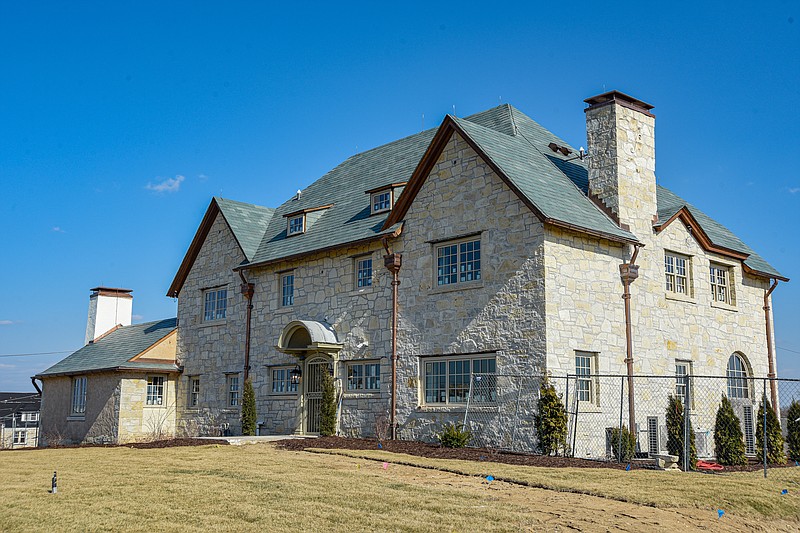Two years after it was severely damaged by an EF-3 tornado, the Lincoln University President's Residence on Jackson Street should reopen next month.
Jeff Turner, LU's new Facilities and Planning director, told the LU's Board of Curators Building and Grounds Committee on Tuesday work had moved along, "but not at the speed I would have liked for it to."
"We are running into challenges with raw materials - mainly anything wood-based has been a challenge from a delivery perspective, getting the materials from the mill. That's primarily due to COVID-19 issues," he continued.
Two weeks of arctic weather in February also delayed completion of exterior work on the home, he added.
"I know (Jerald Woolfolk) is anxious to get back into the house, and I don't blame her," Turner said.
The home's interior essentially was "demolished in terms of its aesthetics" on all three floors except the basement, Turner said. They took the interior walls "back to studs" and rebuilt the interior.
"Structurally, the building is sound - there's no concerns about structural integrity," Turner said. "It took a beating, both inside and out. The exterior took the worst of it as all of the doors and windows were blown out, ripped off and distributed throughout the community."
While doing this work, they found previous improvement work on the home had not been done to building codes, he said.
"When we started the project, I told the insurance company we need to have the city involved to get up to code to finish the project," Turner said. "There was some initial resistance, but once they started to see the issues I was pointing out, they stopped."
One issue discovered was an earthen retaining wall that was made of stones and boulders - by code standards that wouldn't be considered a retaining wall.
"There were some things we found in the home that would really frighten you," Turner said. "Some things are grandfathered in based on the historical relevance of the home. There are still some challenges, but we definitely brought it up to newer standards."
The home is on the National Register of Historic Places. That's part of the reason the cost of the work - $3.1 million - is high, Turner said.
"It required slate roofing, copper guttering, flashing and trim," he said. "These are super expensive, and having to use these equals the cost of building a new home for most people. You start to realize that to put this home back to its full glory is expensive."
Turner said the house became "a blender" when the tornado hit it May 22, 2019.
"The house, because of where it was at, everything spun around inside and all the glass embedded itself in the walls," Turner said. "So we had to go through plaster to get to the studs, and that was when we found code compliance issues with the electrical work in the home. There's no mold issues. That house has been reinsulated as well."
LU is working with the insurance company on paying the costs of all the work.
Dickinson Research Center to reopen
Lincoln's Dickinson Research Center is also on track to reopen next month, Turner said.
In September 2019, the Board of Curators approved a construction contract with Curtiss-Manes-Schulte Inc. Construction of Eldon to build a 7,185-square-foot facility to replace the original building, which caught fire in July 2015.
The center is located on the south side of LU's campus near Chestnut Street and Leslie Boulevard.
The new building will include multiple research and teaching lab spaces, chemical storage and a classroom. There will also be greenhouses.
The new building will be an improvement over its predecessor, providing an open educational environment for students, Turner said.
The total cost is estimated to be around $4.5 million. The funding is coming from a variety of sources, with the biggest amount at $2.2 million from a 1980 facilities grant.
"The research team will be training on new equipment over the next few weeks," Turner said. "They have quite a bit of equipment to move into the building, millions of dollars worth."

